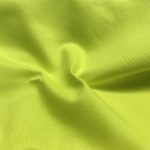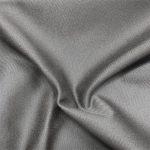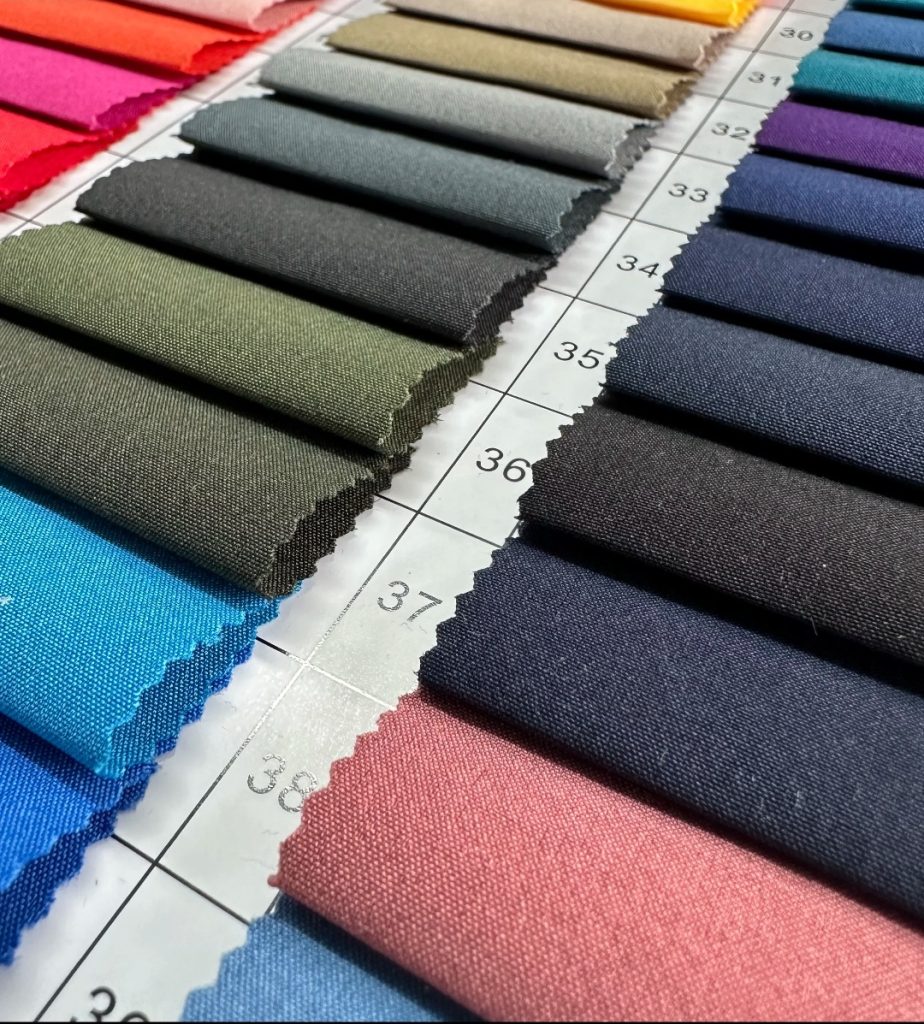I. Functional Requirements
(I) Antibacterial and Protective Performance
In a high-infection-risk environment like a hospital, the antibacterial performance of nurse uniform fabrics is the primary consideration. Fabrics with antibacterial functions can effectively inhibit the growth and reproduction of bacteria, fungi, and other microorganisms, reducing the risk of cross-infection. For example, silver-ion antibacterial fabrics, by embedding silver ions into the fibers, can continuously release antibacterial ions and have a significant inhibitory effect on common pathogens such as Staphylococcus aureus and Escherichia coli.
Practical case: When a large general hospital was choosing nurse uniform fabrics, it gave priority to fabrics with antibacterial properties. After a comparative test, they chose a fabric containing silver ions to make nurse uniforms. After a period of use, through the monitoring of the hospital’s infection rate, it was found that in the departments where nurses wore these antibacterial nurse uniforms, the cross-infection rate was 15% lower than that of departments using ordinary fabric nurse uniforms, effectively safeguarding the health of patients and medical staff.
In addition, a specialized infectious disease hospital, given its special patient population and infection risk, selected a nano-technology fabric with high antibacterial and antiviral functions. Through practical verification, during the high-incidence period of infectious diseases such as the flu, the infection rate of medical staff in this hospital was significantly lower than that of other hospitals in the same region.
(II) Breathability and Moisture Absorption Performance
Nurses’ work often requires long periods of activity and busyness, which makes them prone to sweating. Therefore, nurse uniform fabrics need to have good breathability and moisture absorption performance to quickly discharge sweat and keep the body dry, improving the wearing comfort. Natural fibers such as cotton, as well as some new synthetic fiber fabrics, such as polyester fiber fabrics with moisture-wicking functions, can meet this requirement.
Practical case: In a regional hospital, during the summer, nurses reported that the nurse uniforms they wore were stuffy and not breathable, affecting work efficiency and comfort. The hospital then purchased a batch of nurse uniforms made of moisture-wicking polyester fiber fabric for a pilot project. Nurses reported that the new nurse uniforms were cooler and more comfortable to wear, and the stuffiness during work was significantly reduced, and work efficiency also improved.
Furthermore, a rehabilitation hospital, in order to provide a more comfortable environment for long-term inpatients and medical staff, in the selection of nurse uniform fabrics, adopted a bamboo fiber fabric. Bamboo fiber has good breathability and moisture absorption and has natural antibacterial properties. After nurses wore nurse uniforms of this fabric, not only did they feel comfortable themselves, but patients also reported that the image of nurses was fresher and more natural, creating a warmer atmosphere for rehabilitation treatment.
(III) Abrasion Resistance and Anti-Wrinkle Performance
Nurses have a high work intensity, and in daily activities, they frequently come into contact and friction with various objects, which requires that the nurse uniform fabric has high abrasion resistance and can withstand long-term use without being easily damaged. At the same time, fabrics with good anti-wrinkle performance can keep the nurse uniforms looking neat without the need for frequent ironing, saving nursing time and energy.
Practical case: In order to improve the durability and aesthetics of nurse uniforms, a specialized hospital selected a fabric with high abrasion resistance and anti-wrinkle properties. After a period of use, it was found that compared with the previously used fabric, the abrasion of these nurse uniforms was significantly reduced, and wrinkles were not easily produced after washing, reducing the maintenance cost and time of nurse uniforms and also enhancing the overall image of the hospital.
Another large teaching hospital, due to the large number of trainee nurses and newly recruited nurses, and the high activity level in work, the abrasion of nurse uniforms is more serious. The hospital selected a special wear-resistant nylon fabric to make nurse uniforms. After one semester of use, these nurse uniforms still maintain a good appearance and performance, greatly extending the service life of nurse uniforms and reducing the replacement frequency and cost.
(IV) Anti-Static Performance
In a dry environment or during certain special medical operations, static electricity may cause interference and hazards to medical equipment and patients. Therefore, fabrics with good anti-static performance are also an important factor in the selection of nurse uniform fabrics. For example, fabrics with conductive fibers added can quickly conduct static electricity to avoid static electricity accumulation.
Practical case: In a specialized cardiovascular hospital, during high-precision operations such as cardiac interventional surgery, it was found that due to the static electricity generated by nurse uniforms, there was a certain impact on surgical equipment and monitoring instruments. The hospital then replaced it with professional nurse uniform fabrics with anti-static performance, solving the problem of static electricity interference and improving the safety and success rate of the surgery.
(V) Waterproof and Stain-Resistant Performance
In some medical operations, nurses may come into contact with blood, body fluids, liquid medicine, and other contaminants. Fabrics with waterproof and stain-resistant properties can protect the nurse’s skin and clothing from contamination and are also easy to clean and disinfect.
Practical case: An emergency department often handles various trauma and emergency situations, and nurse uniforms are easily contaminated by blood, vomit, etc. The hospital selected fabrics with waterproof and stain-resistant functions to make nurse uniforms. After being contaminated, the nurse uniforms can be cleaned with a simple wipe, reducing the risk of cross-infection and also reducing the cleaning burden of nurses.
II. Cost Factors
(I) Fabric Procurement Cost
The procurement cost of fabrics is an important economic factor that hospitals need to consider when choosing nurse uniform fabrics. Different types of fabrics have significant price differences. For example, natural fiber fabrics are relatively expensive, while synthetic fiber fabrics are more affordable. Hospitals need to reasonably control the procurement cost under the premise of ensuring fabric performance to achieve a balance between economic benefits and usage effects.
Practical case: A community health service center, under a limited budget, needed to purchase a batch of new nurse uniform fabrics. Through market research and cost analysis, they chose a moderately priced polyester-cotton blended fabric. This fabric not only has certain antibacterial and moisture absorption properties but also has a price lower than pure cotton fabric, meeting the center’s budget and functional requirements.
A township hospital also faced a tight budget issue. After careful screening, they chose a batch of ordinary polyester fiber fabrics made in China. Although the performance is not as good as some high-end fabrics, the procurement cost is significantly reduced and can meet the basic work requirements.
(II) Maintenance and Service Life Cost
In addition to the procurement cost, the maintenance cost and service life of nurse uniforms will also have an impact on the overall cost. Some fabrics may have a low purchase price but may require frequent washing, ironing, and repair, or have a short service life and need to be replaced frequently, thereby increasing the long-term cost. In contrast, some high-quality fabrics may have a high purchase price but are simple to maintain, have a long service life, and may be more economical in the long run.
Practical case: When a large hospital initially purchased nurse uniform fabrics, in order to reduce the procurement cost, it chose ordinary fabrics with a low price. However, during the use process, it was found that these fabrics were prone to wear, fading, and required frequent replacement and repair, resulting in a significant increase in maintenance costs. Later, the hospital replaced them with a high-quality wear-resistant and wash-resistant fabric. Although the procurement cost was higher, due to the long service life and reduced maintenance cost, the overall cost was effectively controlled.
A private maternity hospital, in order to improve the service quality, invested in the purchase of a batch of imported high-end nurse uniform fabrics. This fabric is not only comfortable to wear but also wash-resistant and wear-resistant. After long-term use, it still maintains good performance and appearance. Although the initial investment is high, due to the reduced cost of frequent replacement and maintenance, in the long term, it has saved the hospital a lot of expenses and also enhanced the hospital’s brand image.
III. Aesthetic and Image Factors
(I) Color and Style Matching
The color and style of nurse uniforms not only affect the image of nurses but also have a certain impact on the psychology of patients. Generally, soft and warm colors such as light pink and light blue can bring patients a sense of comfort and reassurance. At the same time, the design of the style should be simple and generous, in line with ergonomic principles, and convenient for nurses to work.
Practical case: A hospital specializing in pediatric medical care, in order to create a warm and friendly medical environment, chose nurse uniform fabrics with bright colors and lively styles. Nurse uniforms in pink and light blue with cute patterns were loved by children and their parents and also enhanced the hospital’s brand image and affinity.
A high-end cosmetic and plastic surgery hospital, in order to reflect its fashionable and professional image, adopted a simple and slimming design for nurse uniforms. The colors selected were fashionable off-white and light purple, leaving patients with a high-end and exquisite impression and improving patients’ trust and satisfaction with the hospital.
(II) Hospital Culture and Brand Building
The hospital’s culture and brand positioning will also affect the selection of nurse uniform fabrics. Some hospitals pursue a high-end and professional image and will choose high-quality fabrics with unique designs; while some community hospitals or primary medical institutions pay more attention to practicality and economy and choose relatively simple fabrics.
Practical case: A high-end private hospital, committed to building an international and professional medical brand. In the selection of nurse uniform fabrics, they chose fabrics with a high-quality texture and fashionable design and collaborated with well-known designers to customize unique styles. This kind of nurse uniform not only reflects the hospital’s high-end positioning but also enhances patients’ trust and recognition of the hospital.
In addition, a public hospital with a century-old history, in order to inherit and promote the hospital’s cultural heritage, adopted classic styles and traditional colors in the design of nurse uniforms and selected high-quality fabrics, making the nurse uniforms not only reflect the hospital’s historical heritage but also show the professional image of modern medical care and become an important carrier of hospital culture.
In conclusion, the selection and decision-making of nurse uniform fabrics need to comprehensively consider various aspects such as functional requirements, cost factors, and aesthetic and image factors. Through reasonable selection and decision-making, it is possible to provide nurses with comfortable, safe, and practical work clothes and also help improve the hospital’s overall image and service quality.

 100% COTTON FABRIC
100% COTTON FABRIC COTTON STRETCH FABRIC
COTTON STRETCH FABRIC POLYESTER/COTTON FABRIC
POLYESTER/COTTON FABRIC OTHERS FABRIC
OTHERS FABRIC